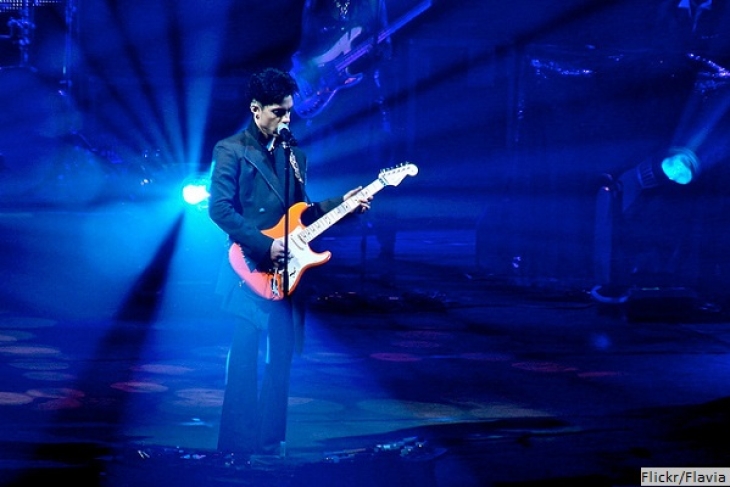In the wake of Prince’s untimely death on Thursday, the world marks the passing of a multi-talented performer and musical polymath. Prince Rogers Nelson was one of his generation’s most gifted songwriters; a virtuosic guitarist; a compelling (if somewhat enigmatic) screen presence; and a champion for the sartorial cause of purple. Even his most dedicated fans may not realize, however, that he leaves behind a legacy in the realm of education as well.
The High School for Recording Arts (HSRA), located in St. Paul, Minnesota—essentially Prince’s backyard—is a charter school focused on project-based learning for students interested in music and recording. Among other perks, it boasts a student-operated record label and a weekly timeslot on local radio, all with the goal of leading at-risk kids from idleness and poverty to lives of creative fulfillment. The school released a statement today mourning the musician’s death and discussing his influence on its mission. “The history of the charter school is inextricably connected to the artist known as Prince, and his spirit has always permeated through the music studios, classrooms, and hallways of HSRA,” it begins.
HSRA’s founder, David Ellis, was a troubled student himself. In the 1980s, he toiled fruitlessly at the margins of the music industry until he was at last able to leverage a personal connection (he and the pop icon shared a mutual buddy, Gilbert; small world, the Twin Cities) to break into Prince’s touring circle. Soon he was rapping onstage and producing with the Paisley Park crowd—an improbable success story, given the path he’d been on just a few years prior. When a crew of local dropouts starting hanging around his private studio in the mid-90s, trying to cadge recording time, he had a moment of inspiration: Why not build an academic space around the talents and ingenuity of aspiring musicians?
Ellis started HSRA as a tiny pilot program, but the flourishing of its initial charges convinced him of the need for expansion. Today, the fully grown charter serves two hundred kids, blending traditional academic content with additional projects tailored to its pupils’ creative interests. It operates as a dropout-recovery program, meaning that the majority of the student body enters “overage and under-credited.” Ninety percent qualify for free or reduced-price lunch, and large numbers have been expelled from other schools or ensnared in the state’s criminal justice system.
“We have a big job to overcome the societal factors that lead to them being dropouts—their experience in traditional public school situations—and to make them recognize that this is better for them,” said the school’s program director, Tony Simmons, in a 2011 radio interview. “It’s really an epic battle going against the forces causing them to be dropouts.”
These types of schools, it bears mentioning, are ludicrously difficult to operate. Fordham has documented the chronic failure of the dropout-recovery sector in its home state of Ohio, where dismal performance has led to steadily sinking enrollment. It’s no surprise, certainly, that such schools of last resort often struggle to engage kids who have fallen short academically and behaviorally in other settings. Of those that do succeed, many seem to hew to HRSA’s method of imparting applicable skills to students and allowing them to gain professional knowledge as a product of their work.
HRSA’s story is ultimately a happy one. The school graduates roughly 75 percent of its seniors, and the program has been used as a model for so-called “hip-hop high schools” in other cities. Meanwhile, its leadership still feels a debt to Prince as its inspiration. “I see the legacy of Prince every day when I look into the eyes of the countless students who come through this program,” wrote Ellis in the school’s statement on his death. “Their quest to explore their creativity—and the things that make each of them unique, with an aim to be the best they can be—is what Prince’s life was all about and what our students most want.”


